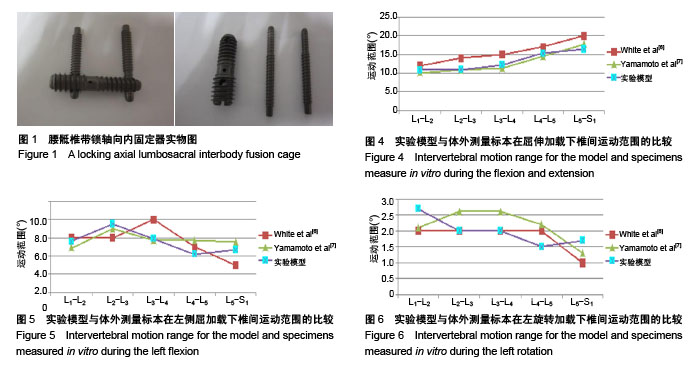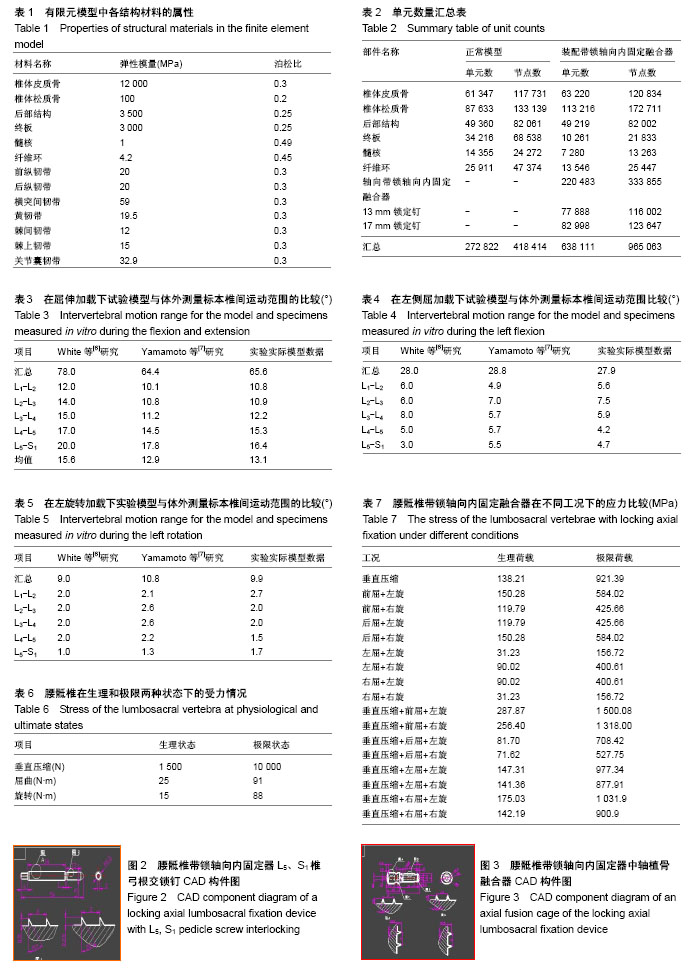| [1] Tobler WD,Gerszten PC,Bradley WD,et al.Minimally invasive axial presacral L5-S1 interbody fusion: two-year clinical and radiographic outcomes.Spine (Phila Pa 1976). 2011;36(20):E1296-1301.[2] Gerszten PC,Tobler W,Raley TJ,et al.Axial presacral lumbar interbody fusion and percutaneous posterior fixation for stabilization of lumbosacral isthmic spondylolisthesis.J Spinal Disord Tech. 2012;25(2):E36-40.[3] Marchi L,Oliveira L,Coutinho E,et al.Results and complications after 2-level axial lumbar interbody fusion with a minimum 2-year follow-up.J Neurosurg Spine. 2012;17(3):187-192.[4] Sengupta DK.Dynamic stabilization devices in the treatment of the lowback pain.Neurol India. 2005;4:466-474.[5] Tsuang YH,Chiang YF,Hung CY,et al.Comparison of cage application modality in posterior lumbar interbody fusion with posterior instrumentation--a finite element study.Med Eng Phys. 2009;31(5): 565- 570.[6] White AA 3rd,Panjabi MM.The basic kinematics of the human spine. A review of past and current knowledge.Spine (Phila Pa 1976). 1978;3(1): 12-20.[7] Yamamoto I,Panjabi MM,Crisco T,et al.Three-dimensional movements of the whole lumbar spine and lumbosacral joint.Spine(Phila Pa 1976). 1989;14(11):1256-1260.[8] Goel VK,Panjabi MM,Patwardhan AG,et al.Test protocols for evaluation of spinal implants.J Bone Joint Surg Am. 2006;88(2):103-109.[9] Kim K,Lee SK,Kim YH.The biomechanical effects ofvariation in the maximum forces exerted by trunk muscles onthe joint forces and moments in the lumbar spine: a finiteelement analysis. Proc Inst Mech Eng H.2010;224(10):1165-1174.[10] Chen SH,Lin SC,Tsai WC,et al.Biomechanical comparison of unilateral and bilateral pedicle screws fixation for transforaminal lumbar interbody fusion after decompressive surgery -- a finite element analysis.BMC Musculoskelet Disord.2012;13:72.[11] Lo CC,Tsai KJ,Chen SH,et al.Biomechanical effect after Coflex and Coflex rivet implantation for segmental instability at surgical and adjacent segments: a finite element analysis. Comput Methods Biomech Biomed Engin. 2011;14(11):969-978.[12] 张美超,焦培峰.骨科三维有限元力学仿真的建模[J].中华创伤骨科杂志, 2013,15(1):10-12.[13] Ding JY,Qian S,Wan L,et al.Design and finite-element evaluation of a versatile assembled lumbar interbody fusion cage.Arch Orthop Trauma Surg.2010;130(4):565-571.[14] 陈志明,马华松,赵杰,等.腰椎单侧椎弓根螺钉固定的三维有限元分析[J].中国脊柱脊髓杂志,2010,20(8):684-688.[15] 郑忠,翁绳健,吴立忠,等.侧路单枚cage椎间融合术式的生物力学及临床研究[J].中国骨与关节损伤杂志,2011,26(1):25-28.[16] Tang S,Rebholz BJ.Does anterior lumbar interbody fusion promote adjacent degeneration in degenerative disc disease? A finite element study.J Orthop Sci.2011; 16(2):221-228.[17] 宋超,李新锋,刘祖德,等.腰椎棘突间撑开融合器治疗早期腰椎退变的三维有限元分析[J].中华临床医师杂志, 2013,7(3):1039-1045.[18] Schmidt H,Shirazi-Adl A,Galbusera F,et al.Responseanalysis of the lumbar spine during regular daily activities--afinite element analysis.J Biomech.2010;43(10):1849-1856.[19] Kim K,Lee SK, Kim YH.The biomechanical effects of variation in the maximum forces exerted by trunk muscles onthe joint forces and moments in the lumbar spine: a finite element analysis.Proc Inst Mech Eng H.2010;224(10):1165-1174.[20] 宋超,李新锋,刘祖德,等.腰椎棘突间撑开融合器治疗早期腰椎退变的三维有限元分析[J].中华临床医师杂志(电子版), 2013,7(3):1039-1045.[21] Woon JT,Stringer MD.The anatomy of the sacrococcygeal cornual region and its clinical relevance.Anat Sci Int. 2014;89(4):207-214. [22] Woon JT,Stringer MD.Redefining the coccygeal plexus.Clin Anat. 2014;27(2):254-260. [23] Ramieri A,Domenicucci M,Cellocco P,et al.Acute traumatic instability of the coccyx: results in 28 consecutive coccygectomies.Eur Spine J. 2013;22 Suppl 6:S939-944. [24] Woon JT,Perumal V,Maigne JY,et al.CT morphology and morphometry of the normal adult coccyx.Eur Spine J. 2013;22(4):863-870. [25] Scott-Warren JT,Hill V,Rajasekaran A.Ganglion impar blockade: a review.Curr Pain Headache Rep. 2013;17(1):306. |
.jpg)


.jpg)